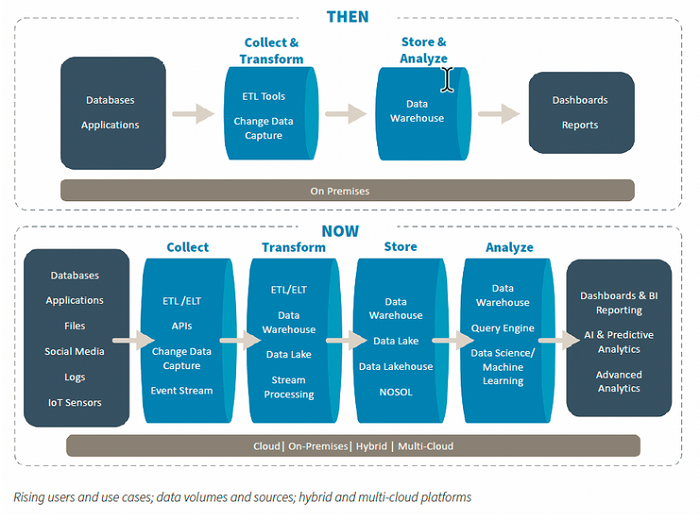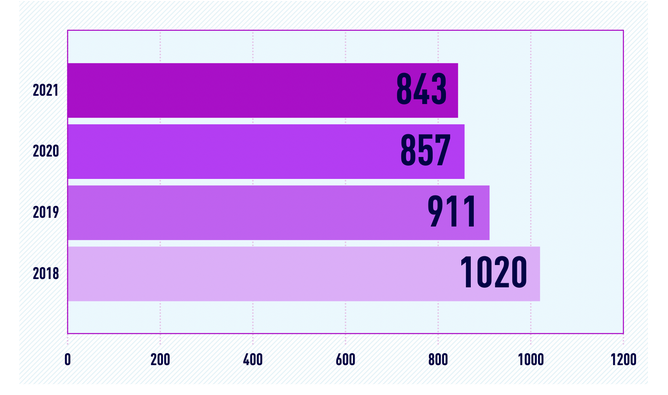
In this special guest feature, Loretta Jones, VP Growth at AccelData, highlights why businesses struggle to move beyond the use of APM tools and achieve full-scale data observability. Loretta is an established growth marketer with extensive experience marketing to SMBs, mid market companies and enterprise organizations. She is a self proclaimed ‘startup junkie’ and enjoys growing early stage startups. She studied Psychology at Brown University and credits this major to successful marketing as well as navigating a career in Silicon Valley. She’s a nature lover and typically schedules her vacations around the migratory patterns of whales and large ocean creatures.
In recent years, business leaders have embarked on ambitious digital transformation projects to develop Industry 4.0. Enterprises have built vast and interconnected technology stacks that collect, generate, store, and analyze massive amounts of data. This data can come in various forms ranging from customer data to business performance data.
Even before the pandemic supercharged the use of data analytics and data collection, large enterprises were using data projects to reduce operational costs, find new delivery channels, and launch new products or services. However, it has proved challenging for enterprises to combine operational data from multiple sources and create complete data observability.
What is multi-dimensional data observability and why does it matter
Multi-dimensional data observability is a systematic solution that helps enterprises manage data complexity. It makes the state of your data, the systems that support your data, and the systems that transform your data, more observable, at any point across its time or data lifecycle. This offers the ability to identify and understand, in context, and from all data sources, what is happening with enterprise data. This includes the status and health of data processing, data quality and reliability, blockages and interruptions in data pipelines, and costs and economic factors of operating data pipelines. Some data observability solutions are uni-dimensional in that they focus on just one data dimension such as data quality or data downtime. But with insights into all aspects of the data stack and all sources that are part of the data stack, multi-dimensional observability helps enterprises observe and optimize a wide range of complex data systems, technologies, and use cases from a single unified view. Enterprises can monitor data pipelines, data quality, and data systems. This allows enterprise data teams to understand their data at any point – across the data life cycle, from ingestion all the way up to consumption – and better align data systems with business goals and outcomes.
Three common challenges businesses face to becoming a data driven organization
1. The rate of data generation outpaces businesses’ capacity to utilize that data
According to the World Economic Forum, the world is expected to generate a staggering 463 exabytes of data each day by 2025. This is not surprising, considering the rate at which consumers and businesses have accepted and ingrained connected technologies into their daily workflows.
However, not all data is useful to a business. The extent to which information teams quickly determine data that is ‘cold’ or ‘dark,’ or get insight into ‘data swamps’ is dependent on their ability to quickly sift through vast amounts of data to find relevant insights. This cannot be accomplished without the right data observability tool that offers auto-discovery and recommendations for data quality rules across the enterprise. Today’s data teams are stretched for knowledge and resources, and need automated ML-based multi-dimensional applications to handle the volume and complexity of systems required to transform enterprise data.
2. Businesses still rely on APM tools to identify problems in an interconnected technology stack
The importance of data monitoring was identified by businesses very early in the development of Industry 4.0. As business leaders began developing highly specialized and mission-critical computing infrastructures, they also developed a method to monitor these systems for any potential points of failure or areas for improvement. The technology used to do this was called Application Performance Monitoring (APM).
These tools provided businesses the ability to preemptively identify and solve issues related to essential applications or systems—at the application level. However, most modern businesses rely on increasingly complicated applications, services, and infrastructure that are interconnected and interdependent, as seen in the diagram below.

3. Point solutions hide the true cost of data pipelines
An unintended side effect of the rise of specialized applications and technologies is the increased fragmentation of data within organizations. Data silos have always been a challenge for business leaders to overcome, but the increasing availability of niche business applications has intensified the problem. Even though most businesses are using fewer applications than in previous years, large companies still utilize an average of 843 applications to run their operations.

From a business perspective, this obfuscates the costs of creating data pipelines, maintaining data pipelines, and eliminating redundant data pipelines. In addition, this also makes it extremely difficult for data teams to get a holistic view of data across the enterprise and deliver quality, fresh data to consumers. Multi-dimensional data observability platforms make data pipelines ‘data aware’, meaning that data teams and executives can observe data pipelines, drill down into the data flowing through the pipeline, and also optimize the data processing infrastructure.
How businesses can use technology to become data driven organizations
A multi-dimensional data observability platform allows businesses to keep an eye on processes that are crucial for business continuity, and identify problems and root causes before these issues become too complex or too expensive to solve. Organizations can reduce downtime, identify trends, and build a data-first foundation for decision making. Data teams that use this technology quickly see the benefits of continually maintained data integrity, free-flowing and efficient data pipelines and data consumers that trust the data they use to make business decisions. Data executives can easily align data costs and business KPIs ensuring their departments support business growth and outcomes based on data.
Sign up for the free insideBIGDATA newsletter.
Join us on Twitter: @InsideBigData1 – https://twitter.com/InsideBigData1




Speak Your Mind